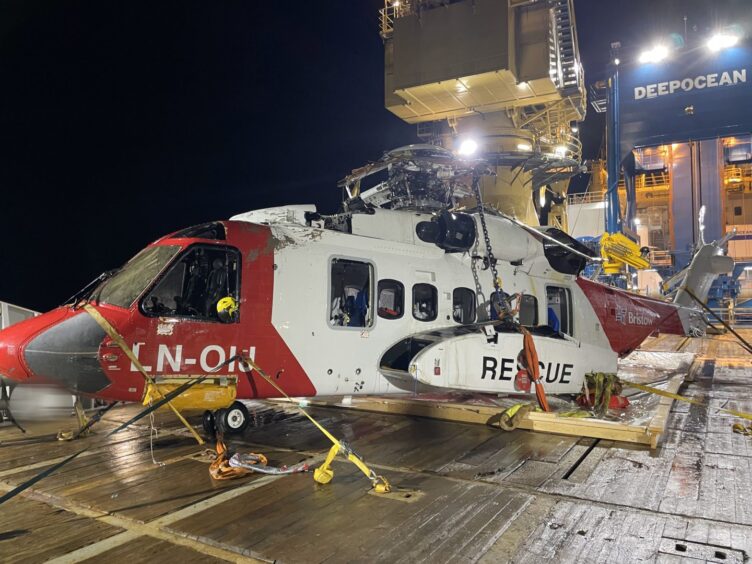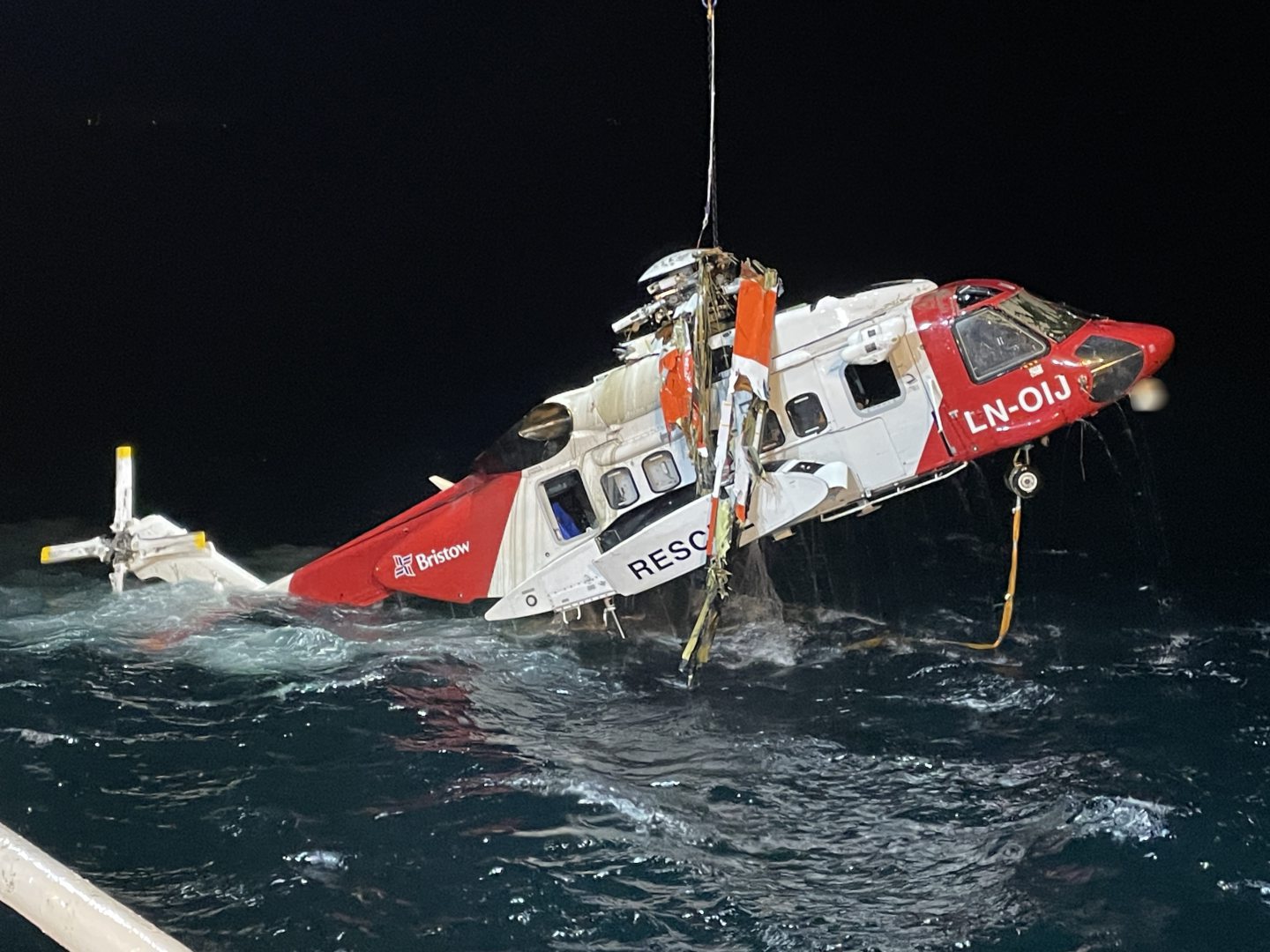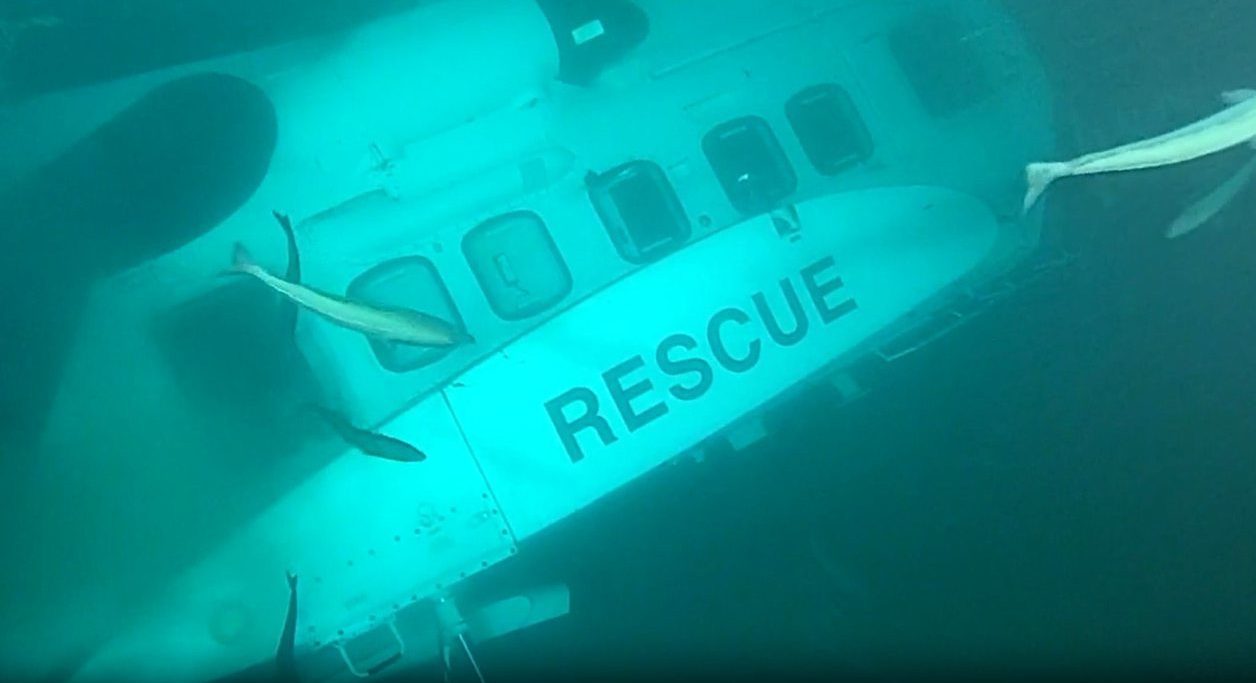
A preliminary report into a fatal helicopter crash offshore Norway has identified the autopilot system of the Sikorsky S-92 as a factor in the accident.
61-year-old nurse and Equinor employee Reidun Hestetun died and five others were injured when the Bristow-operated S-92 search and rescue (SAR) helicopter crashed during a training exercise.
Norway S-92 crash investigation
In a report released today, the Norwegian Safety Investigation Authority (NSIA) said the helicopter pilot was attempting to locate an emergency beacon prior to the accident.
In dark and overcast conditions, with waves around 10ft high, the pilot descended to an altitude of 200ft to locate the beacon off the coast of the island of Sotra.
After finding the beacon, the co-pilot activated the Automatic Flight Control System (AFCS) of the S-92, causing the helicopter to descend towards a hover point.
The NSIA said to slow down, the S-92 will usually pitch its nose upwards to an angle of around 10 degrees. However, the AFCS continued to pitch upwards past this point and the crew realised that something was wrong.
The pilot attempted a manoeuvre to correct the helicopter’s position, but the S-92 had already reached a nose up altitude of 30 degrees and was flying backwards.
The helicopter descended and crashed into the sea, with the impact causing all windows on the left-hand side to come loose. The NSIA report said the cabin quickly filled with water and sank, without its emergency floats deploying.
Two rescue helicopters were dispatched to the crash site to retrieve the six crew members, arriving 45 minutes after the accident.
The first SAR helicopter retrieved five people from the water, but with one of the survivors in a critical condition and Ms Hestetun showing no signs of life, the crew made the decision to transport the survivors to hospital in Bergen.
The second SAR helicopter arrived around 15 minutes later, and Ms Hestetun was later pronounced dead at Haukeland Hospital.
Autopilot and Sikorsky training
The NSIA report said initial investigations focused on the AFCS and the helicopter flight recorders, but the recorded data “did not clearly indicate why the pitch up manoeuvre continued”.
In addition, the NSIA flight recorder data did not correspond to statements made by the flight crew.
However, after examining the pitch system with manufacturer Sikorsky and investigators from the US National Transportation Safety Board, a “fault was found on one of the three circuit boards” in the pitch system.
The NSIA said the fault in the “pitch trim servo” is still under investigation.
Investigators also said representatives from Sikorsky stated that the when the autopilot ‘Mark on Top’ (MOT) mode is engaged, the S-92 should not normally exceed 12-13 degrees nose up altitude.
However, the NSIA said this information is not contained in flight manuals for the S-92 and until recently, operator Bristow Norway had not established call outs for unusual pitch altitudes.
The report said due to the dark night-time conditions, the Bristow pilots “had few external visual references” and were “caught by surprise” when the pitch continued to increase.
“When they realised the unusual altitude, it was too late to recover,” the report stated.
The NSIA called on all S-92 helicopter operators to take immediate action to ensure pilot and crew training is updated to include awareness and corrective actions of the pitch issue when using the autopilot.
The report also recommended Sikorsky immediately ensure that all operators are aware of the issue and update any relevant manuals for the S-92.
This is not the first time Norwegian investigators have highlighted problems with the Sikorsky flight manual for the S-92.
Following a 2013 crash, the NSIA recommended Sikorsky revise the emergency checklist for the S-92 after an emergency landing on a decommissioned oil rig.
Similarly, in 2009 Canadian investigators found ambiguity in the S-92 oil system failure procedure contributed to the crew misdiagnosing issues with the main gearbox.
Crash investigation ongoing
The NSIA said the investigation is ongoing and further updates will follow.
Investigators are continuing to look into survival aspects of the crash, including emergency equipment such as the emergency flotation system and life rafts.
Other areas still to be investigated include the crew’s personal equipment, the evacuation from the helicopter and the rescue operation itself, the NSIA said.
In June, Equinor released details of an internal investigation into the incident, which included recommended for improvements to training and drills and the availability of equipment such as night vision goggles.
According to the NSIA report, none of the crew were using night vision goggles at the time of the crash.
Recommended for you


 © NSIA
© NSIA © Supplied by AIBN
© Supplied by AIBN